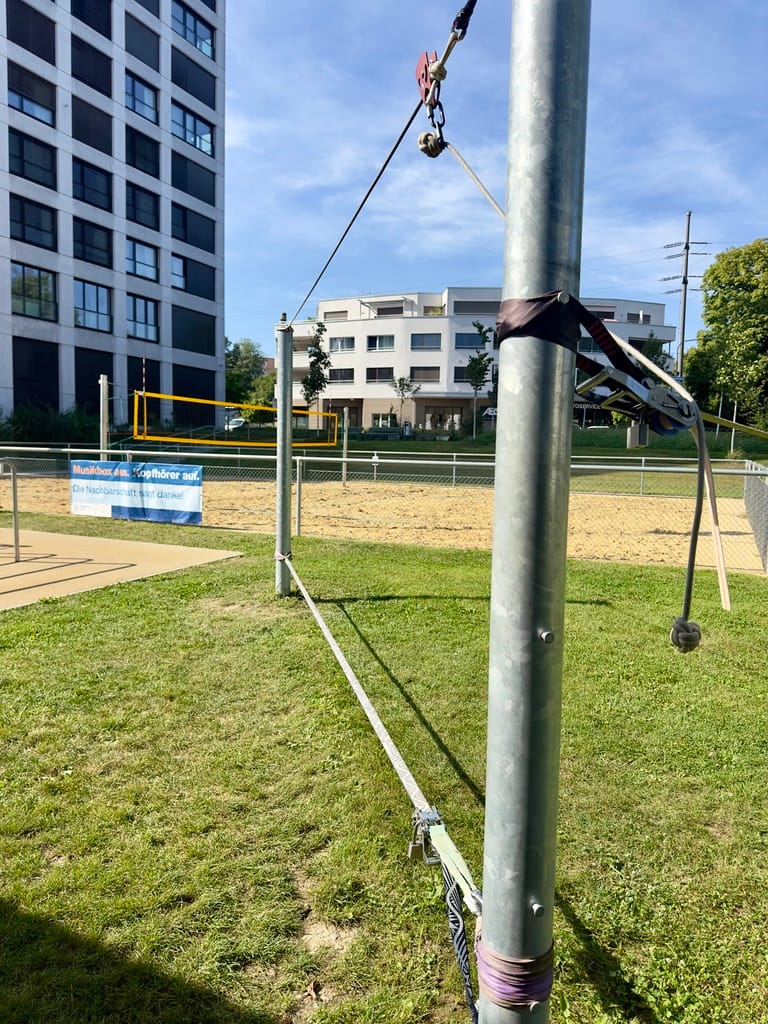Your Focus is (S)Lacking
How a rubber band unveiled the transformative power of mindful breathing in my life.

There’s an outdoor workout place right in front of the building where I live. Right beside it, there are slacklines for everybody to use. Every time I finish a set of calisthenics exercises, I go slacklining for about a minute. What it taught me blew my mind—or rather focused it.

The first time I got onto the slackline, I was awful. I couldn’t even get to the middle of the rope. But you quickly improve. I’m sure my balance got better, but what slacklining really trained was my focus.
I realized that I would stop breathing while slacklining. When I take a breath—and with the oxygen, I also seem to breathe in balance—it’s much easier to keep steady on the twitchy rope. I didn’t feel the greatest effect of this realization in my ability to half-tumble over rubbery rope, though. Where I felt the most tremendous change was in daily life.
I already knew that breathing has a pivotal effect on how one feels stress. Every half-decent self-help book will tell you the same thing (over and over again). But what I hadn’t yet realized was the way I was breathing under stress. Instead of breathing normally, I would start taking short breaths or even hold my breath—the exact opposite of what all gurus teach!
Whenever you feel stressed or under tension, take a deep breath. It will center you. Then, you’re able to make much better decisions because you’re going to see things more clearly. It will wash away the filter that stress puts on your perception.
“It’s not what you look at that matters, it’s what you see.”
— Henry David Thoreau
By focusing your attention on one object (the breath), you can cut through the noise. What I immediately thought of after this slacklining session is how similar it is to mindfulness meditation. Mindfulness meditation at its core is to direct attention to a chosen object in consciousness. Modern neuroscience praises the positive effect of such a meditation practice on neuroplasticity and default mode network modulation, just to name a few. Here’s a simple mindfulness exercise: Focus on the sensation of breathing. Every time your focus wanders onto something else, return your focus to the breath in a nonjudgmental way.
If you think that’s easy, you’re in for a treat. You’ll soon realize that your mind blabs on and on without shame. If a thought captures your attention, then you’re what is known as “lost in thought.” Every time this happens, I have the urge to punch the thought, the wall, and myself (I’m not that good at the nonjudgmental part yet). Don’t do that. Instead, just calmly move your attention back to the breath. Please try it for five minutes. Then turn it into a daily practice, since consistency is key. It will not just change your mind, but your life for the better.
"Some of the greatest battles will be fought within the silent chambers of your own soul." — Ezra Taft Benson
Every meditation teacher is probably going to leave Nirvana for a moment to kick me in the face for comparing slacklining to meditation. But it’s not that far off. I heard Sam Harris once say that even the activities that put you into a flow state are not like meditation, but every single one of those activities is compatible with meditation. You can meditate while engaging in those activities, as long as you center your awareness. It’s the same with slacklining. If you’re on the rope and are aware that thoughts like the fear of falling enter your mind, aren’t you meditating after all?
Whether it’s your goal to be more focused and calmer or become the next Buddha, give mindfulness meditation a try. You’re going to realize how powerful the breath can be. Breathing calms the storm in your mind, turns the tide, and blows the wind in your favor. Whenever you feel overwhelmed, unfocused, or stressed: breathe.
